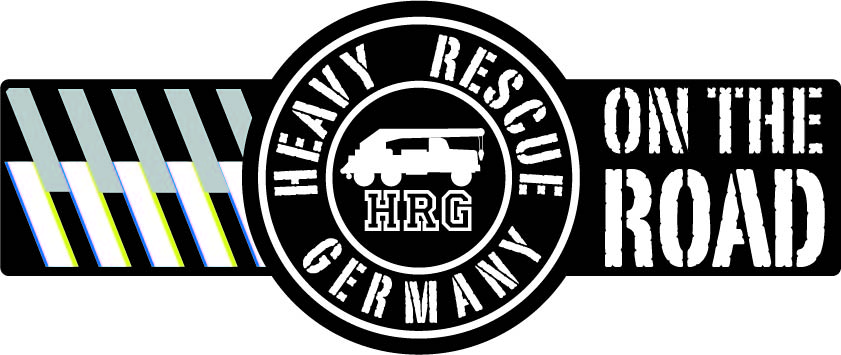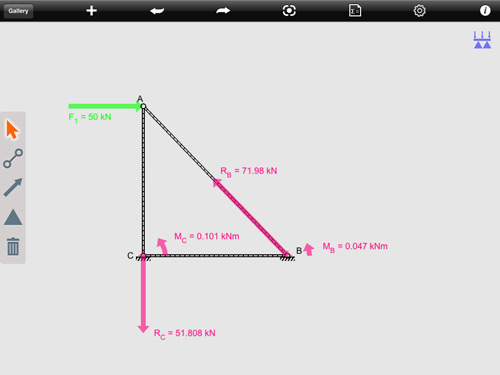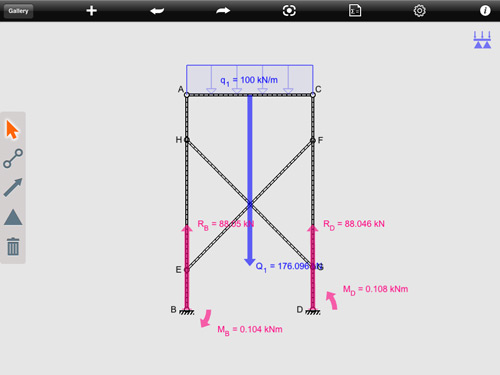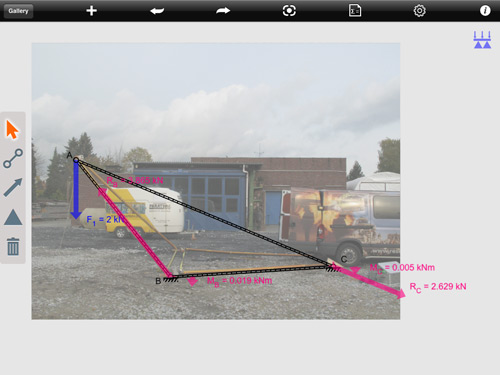USAR: Autodesk ForceEffect
Gerade angefangen, mich auf dem iPad in Autodesk ForceEffect (Link zur Seite mit den Apps) einzuarbeiten. Schon jetzt werden die Möglichkeiten ersichtlich, aus meiner Sicht im Bereich USAR. Im Prinzip geht es darum, auch einfache Art und Weise einwirkende Kräfte zu berechnen.
Das Beispiel oben zeigt einen 45° Stützbock* – was passiert wenn die Kraft im Einleitungspunkt 50kN beträgt? Die Stütze wird mit 70kN belastet, und der Streichbalken „will“ mit 50kN nach oben.
I’ve just started experimenting with Autodesk ForceEffect on my iPad. It’s a fabulous app for calculating loads; in the picture above, it’s a raker shore**. The force applied to the insertion point is 50kN, resulting in a force of 70 kN on the strut, and a pull of 50kN on the wall plate.
Schwelljoch geht auch (Double T Spot Shore):
Das Drehmoment an den Füßen müsste daher kommen, dass die Kreuzverschwertung nicht 100% symmetrisch ist?
Richtig genial ist das hier (This is pure genius):
Es ist möglich, ein Bild aufzunehmen und als Hintegrund für die Konstruktion zu nehmen. Somit kann man die Kräfte sofort vor Ort berechnen.
Hier sieht man einen Versuch mit einem „fern“-Zweibein, da der Bodendruck vom Fahrzeug zu hoch wäre (Aufstellen an einer Kante / einem Überhang).
2kN am Haken, das entspricht Retter und Patient, ergibt eine Last von 1,9kN pro Stütze (13kg/cm^2 Bodendruck mit den verwendeten Platten) und eine Zugkraft von 2,6kN am Ankerpunkt. Vorbei mit der Raterei!
Wohlgemerkt ist es hier ein statisches Zweibein. Hinzu kommt noch ein Zugseil. Ist dieses dieses unter Last, so verändert sich der gesamte Kraftfluss, aber das ist schon mal eine Aufgabe für die nächsten Schritte. Interessant wäre auch die Berechnung der Scherkräfte an den Füßen.
It is possible to import a picture and superimpose the construction on top. In effect, calculations can be done on the spot.
This is a test setup we did, with a „remote“ bipod used on an overhang that can not take the weight of a vehicle. The calculations are for a „static“ Bipod. Here, a 2 kN load (rescuer and patient) results in a 1,9kN load per strut (and 13kg/cm^2 per plate) and 2,6kN pull force on the attachment point.
Note this is a static bipod, as forces will shift when a pulling system is added. But it is sufficient for quick an dirty calculations, and we move away from guesswork! It might also be worthwhile having a closer look at the shear forces on the ground plates.
Wie gesagt, dies sind die ersten Gehversuche, aber damit lassen sich schon grobe Berechnungen für die meisten USAR-Anwendungen anstellen. Übrigens: die von mir (bzw ForceEffect) angegebenen Werte sind ohne Gewähr.
These are first impressions, and there is plenty more playing around to be done, but already not it is possible to do rough calculations. Please note I take no responsibility for the indicated loads calculated by me (or ForceEffect).
Sollte jemand hier sich selber daran versuchen wollen, würde ich sehr gerne davon hören! I’d love to hear if somone feels compelled to spend some energy on this!
THANKS Alexander Maier für den Tipp!
* Streichbalken 3,5m, somit ist die Strebe 4,8m lang. Bei 10er Kantholz hätte eine Verschwertung hineingehört, die aber theoretisch keinen Einfluss auf die auftretenden Kräfte hat
** The wall beam is 3,50m high, the raker 4,8m long and should be provided with a mid-point brace, which I have omitted here. In theory, this has no effect on the forces.





0 comments